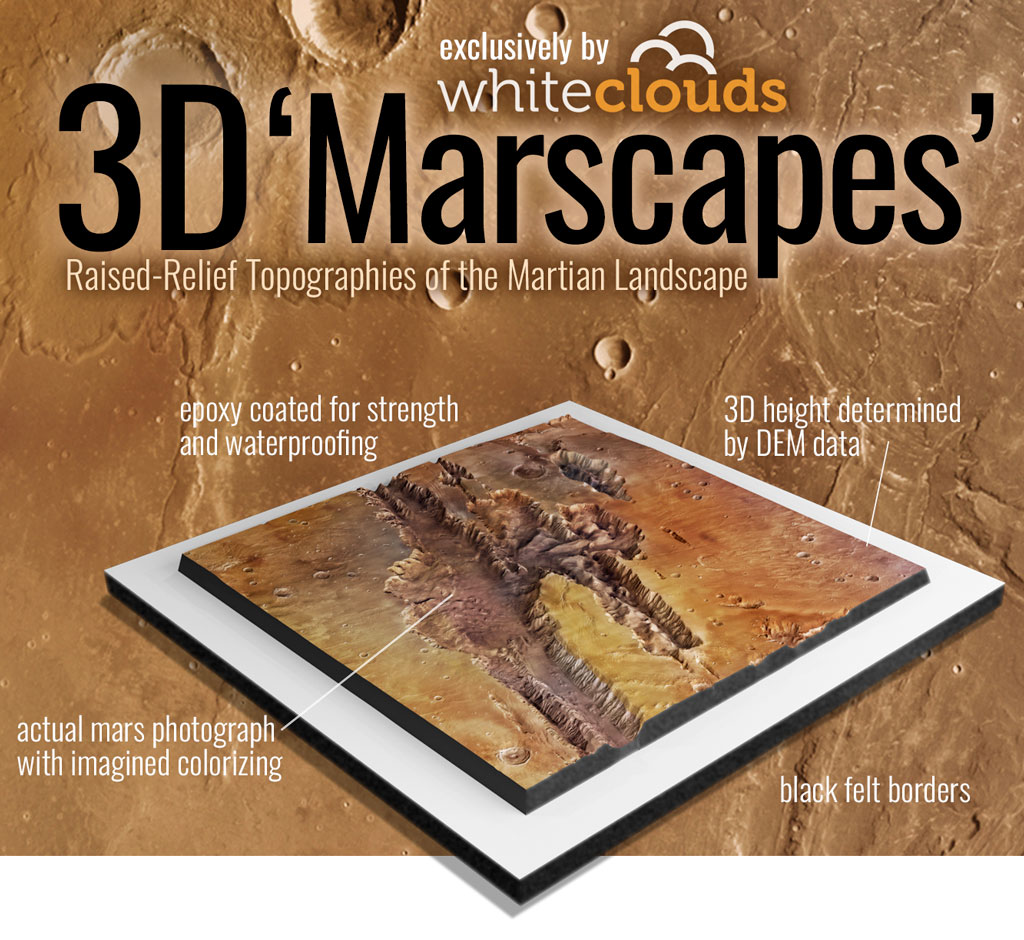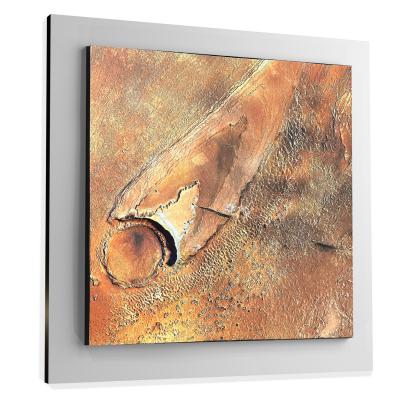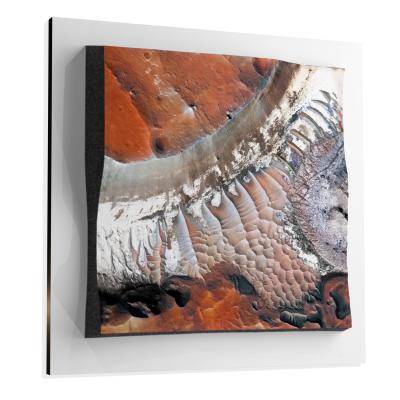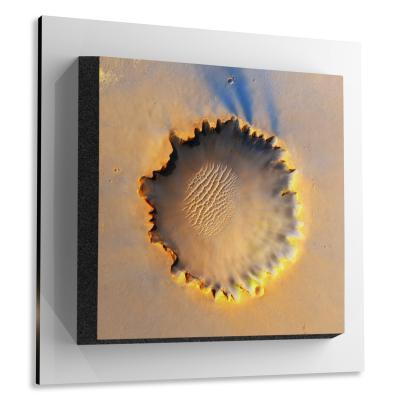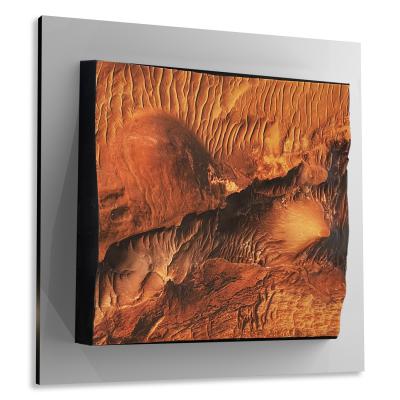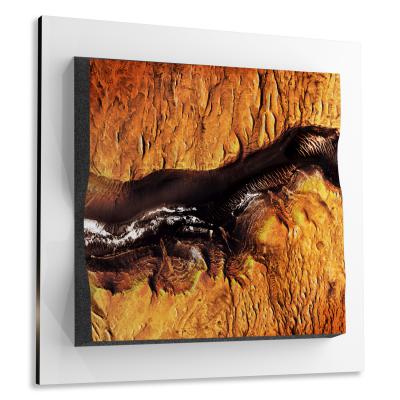Chasma Boreale
Chasma Boreale
We Build Custom 8K Mars Canvas Prints of Chasma Boreale
Did you know we make
custom
8K Mars Canvas Prints

and
3D Marscapes

Chasma Boreale
Chasma Boreale is one of the most striking features on the Martian landscape, capturing the imagination of scientists, researchers, and space enthusiasts alike. This enormous canyon-like feature, located in the Martian north polar region, has been a subject of fascination and scrutiny for decades. Serving as a critical geographical feature, Chasma Boreale provides critical insights into Mars’ geological history, climate dynamics, and the evolutionary processes that have shaped the planet.
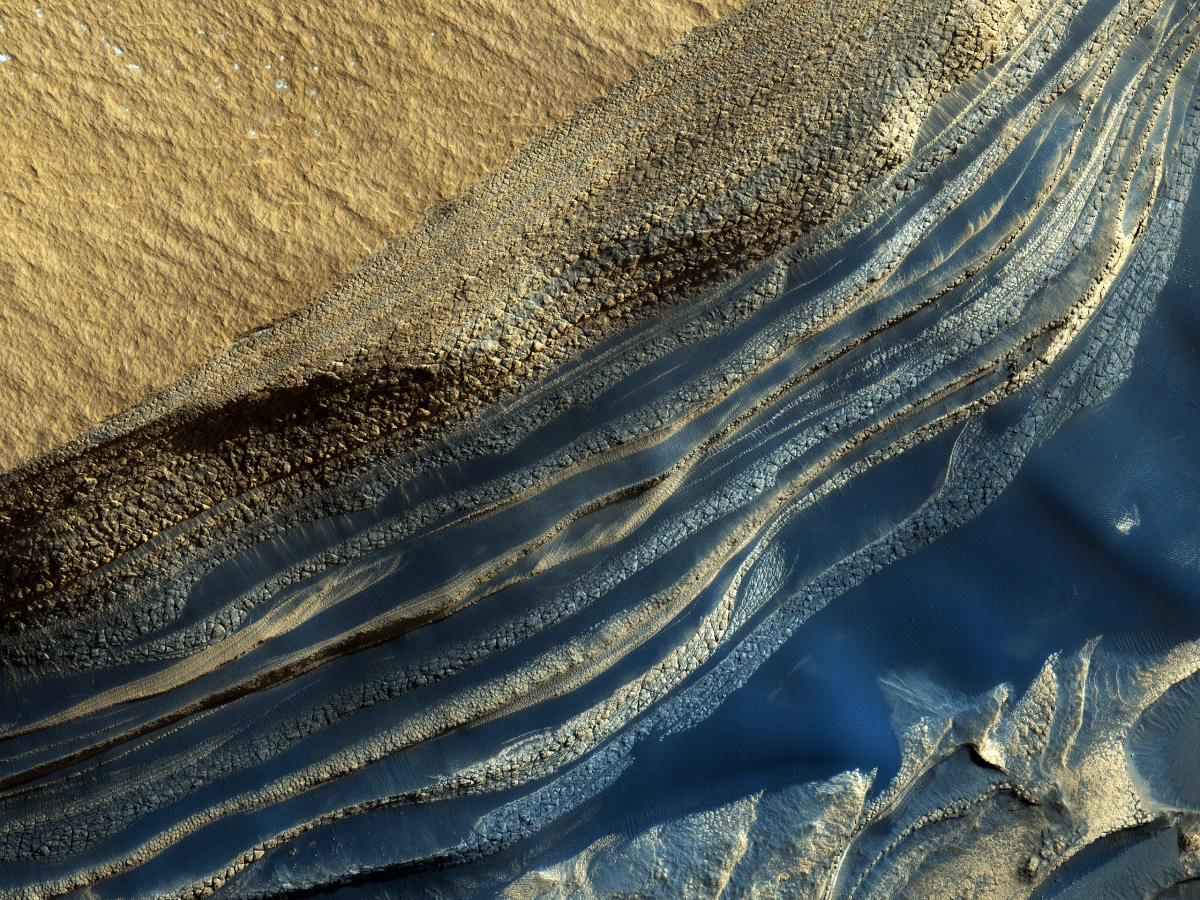 North Polar Layered Deposits in Head Scarp of Chasma Boreale
North Polar Layered Deposits in Head Scarp of Chasma Boreale
Geographical Location
Chasma Boreale is a striking landform located in the Planum Boreum, the expansive north polar cap of Mars. The chasm is geographically positioned at approximate latitudes ranging from 84°N to 87°N. Measuring a remarkable 560 kilometers in length and spanning up to 100 kilometers in width, this distinct feature represents a nexus of geological and climatic processes that are unique to its polar environment. Being situated in the polar region, Chasma Boreale offers unparalleled opportunities to study various Martian phenomena including polar processes, ice deposition mechanisms, and the planet’s axial tilt variations across geological time scales. Importantly, Chasma Boreale does not exist as an isolated geological feature. Rather, it is intricately connected to an elaborate polar landscape comprised of various layered terrains, deposits of ice, and a series of smaller chasms and troughs. These features collectively participate in an intricate dance of geological interactions, making the area a critical focus point for planetary scientists.
Advertisement
Sample Marscapes
Geological Composition
The geological landscape of Chasma Boreale is a fascinating tapestry that unveils key aspects of Martian history. The chasm’s base is dominated by layered deposits of ice, which are frequently interspersed with layers of dust, regolith, and sediment. These stratified layers serve as a geological time capsule, recording periodic shifts in Martian climate, potentially influenced by the planet’s axial precession. Spectroscopic examinations have revealed the presence of a wide range of ice forms, including both water ice and carbon dioxide ice, reinforcing the significance of Chasma Boreale as a primary subject for the study of Martian cryo-geology. Radar studies have penetrated deep into the icy layers, identifying variations in the purity of ice, which could indicate multiple deposition and sublimation events through Mars’ geological timeline.
Significant Discoveries
Evidence of Climate Change
Among the many revelatory discoveries made in Chasma Boreale, one of the most compelling is the intricate layering of its ice deposits. These layers are considered a critical geological archive, harboring valuable information about the climatic changes that have occurred on Mars. They suggest cycles of axial tilt and orbital variations, thereby contributing essential data to our understanding of long-term climate shifts on the Red Planet.
Ancient Water Flows
Additionally, Chasma Boreale exhibits substantial evidence pointing toward ancient water flow processes. The presence of geomorphic features such as streamlined islands indicates past fluvial activity. This has far-reaching implications not just for understanding the Martian hydrological cycle but also for exploring the planet’s past ability to support liquid water bodies, thereby opening the possibility that life could have existed.
Scientific Missions
Over the years, the scientific scrutiny of Chasma Boreale has been comprehensive and multi-dimensional, attracting a multitude of spacecraft missions focused on unraveling its complex geology and climate history. Notably, NASA’s Mars Reconnaissance Orbiter (MRO) and the European Space Agency’s Mars Express have been instrumental in supplying high-resolution imagery and invaluable spectroscopic data. These missions have significantly advanced our understanding of the chasm’s geological and climatic context. Moreover, earlier contributions from spacecraft like the Mars Global Surveyor have laid the foundational groundwork with the creation of some of the first detailed topographical maps of the region. Looking forward, it is expected that future missions could include specialized landers or rovers capable of traversing and examining the icy terrains.
Geomorphological Features
The geomorphological canvas of Chasma Boreale is incredibly rich and complex, exhibiting a broad spectrum of features that bear witness to Mars’ tumultuous climatic and geological history. Apart from the layered ice deposits, which provide an invaluable narrative of Martian climatic shifts, the chasm harbors additional features like streamlined islands that strongly suggest historical water flows. Erosional mechanisms have also shaped the chasm, as evidenced by scarps, troughs, and other erosional formations that point to ongoing dynamic processes. Beyond the chasm, the surrounding plains display a variety of fascinating features, such as polygonal fractures and crevasse-like formations. These are most likely attributable to thermal contraction and expansion of ice, thereby offering further insights into the dynamism of Martian polar processes.
Chasma Boreale is more than just a stunning geological feature; it is a natural laboratory for understanding Mars. From its geographical location in the polar regions to its complex geological composition, it offers an unprecedented opportunity to study Martian history, climatology, and geomorphology. Significant discoveries related to climate change and ancient water flows have already been made, thanks to past and ongoing scientific missions. As we continue to explore this intriguing feature, it is likely to provide even more clues that could be crucial for understanding not just Mars, but also the broader evolution of planetary landscapes in our Solar System.
Check out our 3D Mars Learning Center for more information on Mars and Chasma Boreale. You can also learn more at: NASA Mars Exploration.
More About Mars
Contact us today to learn more about our 3D services and how we can help you achieve your goals.
